Ursus americanus californiensis
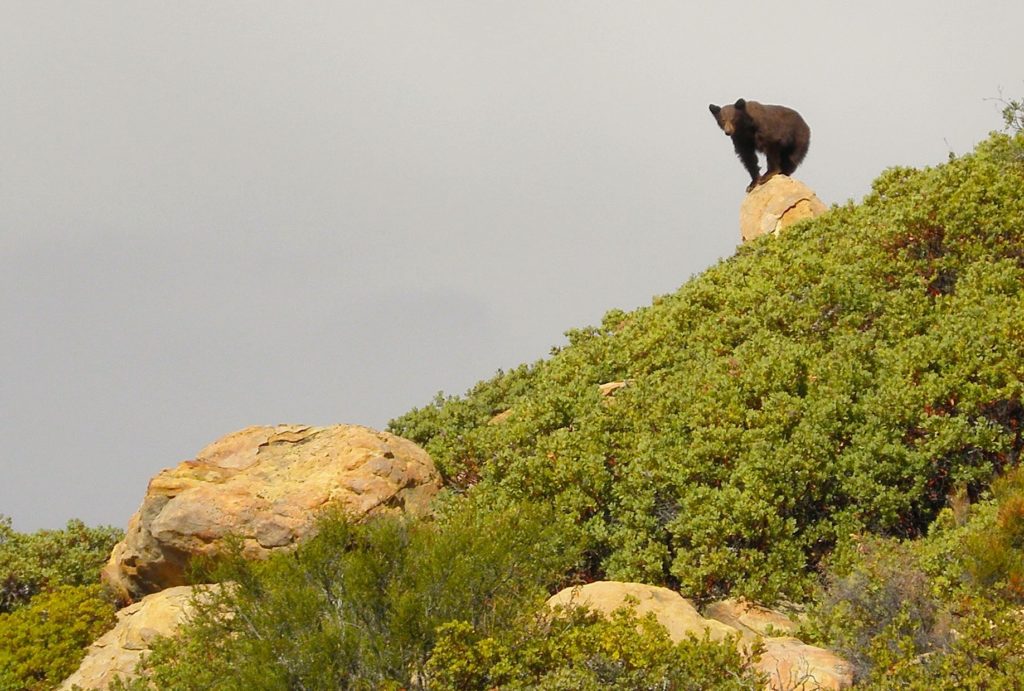
Black bears are an enduring symbol of North America’s wild forests, once roaming across nearly every wooded area of the continent. But by 1900, agricultural and urban development coupled with intensive hunting eliminated black bears from most of the United States. Staging a remarkable comeback over the last century, black bear populations are on the rise in many areas.
The smallest of the three bear species in North America, black bears are more widespread than their grizzly and polar bear cousins but are still considered rare and threatened in Louisiana, Mississippi, Texas, and Florida. As grizzlies were hunted to extinction in California in the early 1900s, black bears gradually moved into former grizzly habitat along the central coast. In the 1930s, the agency then known as the California Department of Fish & Game supplemented this expansion by moving 28 black bears from the Sierra Nevada into southern California.
Aside from their size, black bears can be distinguished from grizzlies by their prominent ears, lack of a mid-shoulder hump, and shorter claws. The top of their front paw prints are also arced compared to those of a grizzly. Confusingly, black bears are not always black, with cinnamon or brown being a fairly common fur color found in black bears in California. However, the easiest way to tell the two species apart in California is to know that the state is only home to black bears. A unique subspecies of grizzly once roamed this area but was sadly hunted to extinction a century ago. So if you see a bear outside of a zoo in California, you can be sure it’s a black bear.
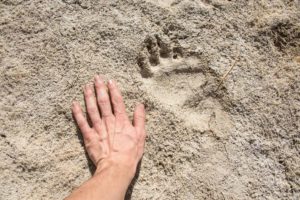
Los Padres: The Southern Fringe
Today, 30,000 black bears roam throughout California and are divided into three distinct subpopulations. The vast majority of the state’s bears are found in the northern portion of the state, in what biologists refer to as the North Coast/Cascade population and the Sierra Nevada population. Further south, the Central Western/Southwestern population ranges from Monterey County to Riverside County along the Transverse Ranges and south coast. This population, which includes the Los Padres National Forest, is the southernmost fringe of bear country and constitutes less than ten percent of the total bear population in California.
The Los Padres National Forest is critical to the survival of black bears in the southern part of the state because it provides a large, relatively undeveloped expanse of habitat where bears can roam freely. Solitary animals, black bears roam large territories, with males wandering across 15- to 80-square mile home ranges.
Bear Behavior
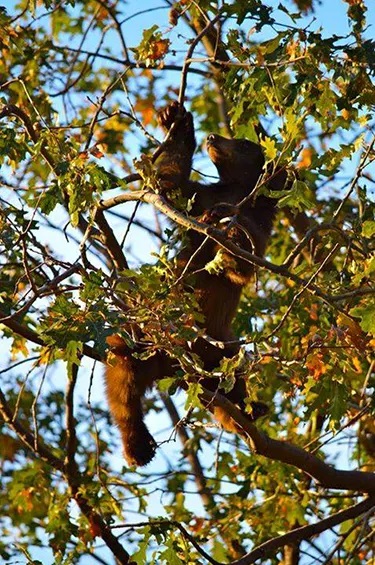
Despite their name, black bears can be brown, tan, gray, or black. And despite their size and fierce reputation, black bears are rather timid, using their claws to climb trees and dig instead of for capturing prey. Black bears are omnivores, eating grasses and leaves in the spring, ants and other insects in the summer, and berries, nuts, and acorns in the fall. Their large, blocky bodies lack the agility required to catch most prey, but they do occasionally feed on fish, small mammals, and carrion. They will quickly climb a tree if they cannot outrun a predator. Black bears typically live in forested areas, but roam across diverse habitats as they seek out a variety of food types.
Black bears require secure, dry den sites for rearing cubs and for their winter hibernation. They make their dens in caves, burrows, brush piles, tree cavities, and other sheltered areas. Black bears are active during the day but concentrate most of their activity at dawn and dusk. However, in areas inhabited by humans, black bears often become primarily nocturnal and extremely secretive. In colder areas, the arrival of winter sends black bears to their dens where they enter a period of dormancy, relying on body fat they have built up by eating all summer and fall. In our region, black bears are typically active year-round because of our mild climate.
Female black bears give birth to two or three cubs in mid-winter. The cubs will stay with their mother for about two years. Black bears have a fairly low reproductive rate, breeding every one to four years with a lifespan of about twenty years. An adult can weigh anywhere from 100 to 350 pounds, although bears up to 600 pounds have been recorded in California. Many bears seen in the Los Padres backcountry appear to be particularly plump, scampering into the chaparral at the first sign of humans.
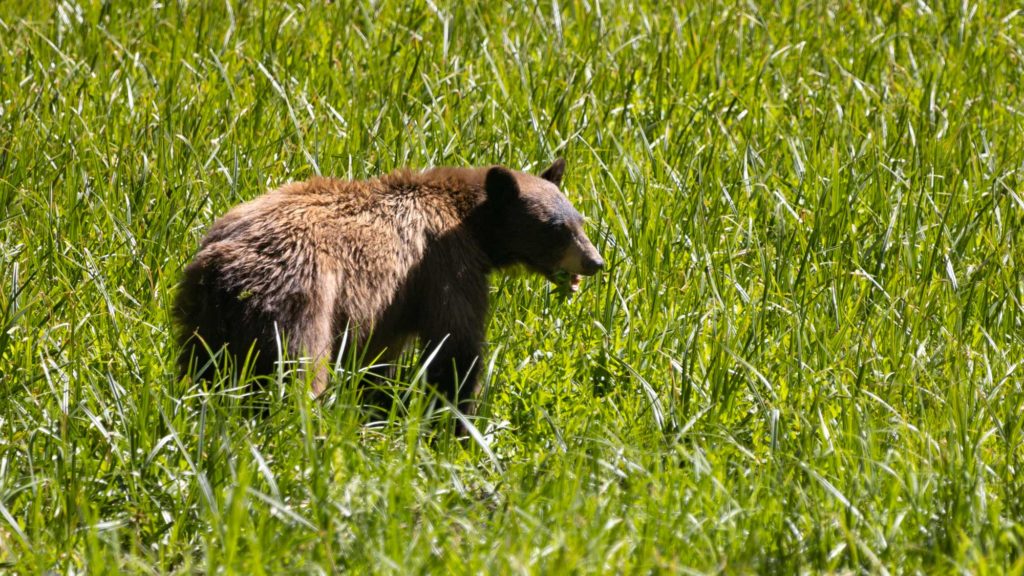
Living With Bears
Black bears can lose their natural fear of humans when they are given access to human food and garbage. Black bears adapt to the presence of people and can become habituated to feeding in residential and recreational areas, creating increased human-bear encounters. In the Los Padres, this problem has emerged in Pine Mountain Club, a small community in the Los Padres National Forest. An organization called Los Padres Bear Aware has formed there to educate its residents about living responsibly in bear habitat.
When bears continually pose a threat to property, the CA Department of Fish & Wildlife may issue a “depredation permit” and the bear may be killed. Between 2006 and 2018, the Department issued 3,430 such permits statewide, which resulted 1,072 bear deaths. Depredation rates are lower around the Los Padres National Forest, with 66 permits issued and 28 bears killed in Monterey, San Luis Obispo, Santa Barbara, and Ventura counties during the same time period. The best method for preventing these interactions is for humans in bear habitat to live smartly by removing bear attractants like garbage and securing structures to prevent entry.
In 2022, state wildlife officials updated the rules for black bear depredation permits. Under the new policy, applicants much show evidence of damage or destruction, what efforts were made to solve the problem without killing the bear, and corrective actions that should be implemented to prevent a recurrence. This could include actions such as hazing, enclosing animal pens, or installing fencing, electric fencing, motion lights, sprinklers, noise machines, or guard animals. This is an improvement over past policies which allowed depredation permits to be issued automatically without explanation or justification. We are hopeful that these new steps will improve coexistence with black bears and result in fewer human-wildlife conflicts.
In 1948, the State of California classified bears as game animals, establishing a hunting season and licensing requirements. Twenty years later, the number of bears allowed per hunter was reduced from two to one. In 1972, hunting of cubs and females with cubs was prohibited. Current regulations provide for a 23 day archery season in August and a general bear hunting season which is concurrent with deer season in the fall. Currently, bear season is closed when 1,700 bears are reported taken or on the last Sunday in December, whichever comes first. The Department of Fish & Wildlife recently considered lifting this cap and allowing an unlimited number of bears to be taken during hunting season, but did not move forward amidst widespread opposition. The use of bait for bear hunting is illegal in California, and in 2012, the California state legislature banned the use of hounds to pursue bears.
Threats
Poaching
The illegal killing (poaching) of black bears has been a problem in California and other western states. In the 1980s, poaching was almost equal to the legal harvest in some areas. A demand for bear parts, particularly feet and gallbladders, for use in traditional Asian medicines was thought to have contributed to illegal activity. While additional regulations have reduced the incidences of poaching, the Department of Fish & Wildlife estimates that illegal kill of bears still constitutes 25% of the legal harvest, or approximately 525 bears in California every year.
Land Management Activities
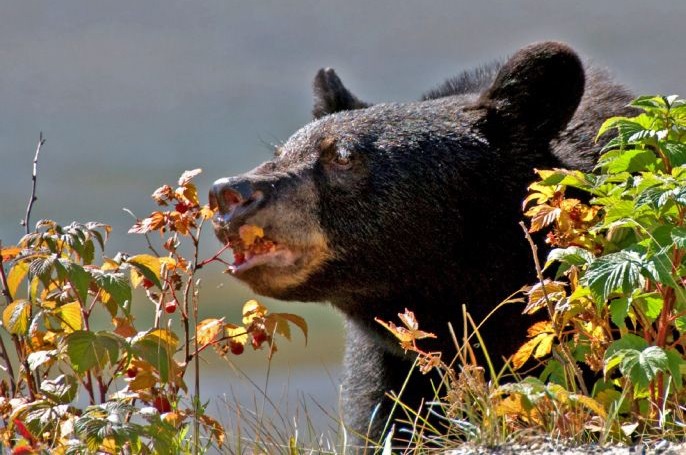
Land management activities can affect the capability of an area to support bear populations. Retention and recruitment of snags (dead trees) and large woody debris provide den sites and potential food sources (colonial insects). Often attendant activities such as road construction, which do not directly reduce habitat, adversely affect bear populations by increasing hunting vulnerability and increasing the likelihood of vehicle strikes.
Hunting Expansion in SLO County
In 2009, state officials announced a controversial proposal to open a first-ever bear hunting season in San Luis Obispo County. ForestWatch was an early leader in efforts to stop the hunt, arguing that the Department didn’t know how many bears even resided in the County and urging state wildlife officials to conduct a scientifically-defensible population survey while organizing community-wide opposition to the hunt.
The Department withdrew both proposals and eventually agreed to undertake a more thorough count of black bears in San Luis Obispo County. The results of this population study were published in 2015, finding that the County’s bear population is more than 90% smaller than the initial estimates used to justify the hunting proposals. Only 101 bears were estimated to exist in San Luis Obispo County as of 2015, though it is unclear how the county’s population has changed since then.
ForestWatch is working to ensure that bear habitat is protected across the Los Padres National Forest, preserving large intact chunks of habitat and their freedom to roam.
Learn more about our Room to Roam campaign to protect bears, mountain lions, and other iconic wildlife in our region.






